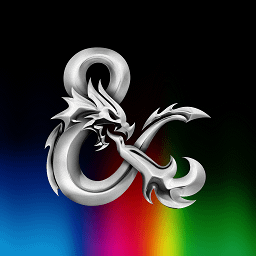Like many 5e players, I investigated other systems during the drama in January. I have converted my table over to Pathfinder 2e, so that’s what I’ll mostly be running going forward.
However, I’m not one of those people who thinks 2e is better than 5e in all respects, and I’ll probably run 5e again at some point in the future. And when I do, there’s a mechanic from Pathfinder that I will 100% be porting over to 5e: Hero Points.
Below I will provide a version of this mechanic, written in the mechanical language of 5e (to the best of my ability)
Hero Points
(replaces inspiration)
Hero points represent a player character’s unique ability to act heroically against adversity.
At the beginning of each play session, each player loses any hero points they have accumulated, then recieves 1 hero point. Depending on the average duration of your group’s gaming sessions, the DM may increase or decrease the frequency of this by periodically resetting hero points mid-session, or only once every couple sessions. The expectation is that this reset will occur roughly once every 3-5 hours of play.
The DM may award additional hero points for any reason. They are encouraged to give out hero points to reward good roleplaying, good tactics, or any behaviour which improves the play experience for everyone at the table. A DM should award an average of approximately one hero point for every hour of play. You can have multiple hero points, but you can never have more than 3 hero points.
Whenever you roll an attack roll, saving throw, or ability check, you may spend a hero point after seeing the result and after the DM tells you whether or not the roll was a success or failure. If you do, you reroll the check and must use the new result, even if it is worse. This roll is unaffected by whether you have advantage or disadvantage on the check.
Whenever you would fall unconscious due to being reduced to 0 HP, or whenever you would accumulate a death saving throw failure, you may spend all of your hero points in order to remove any death saving throw failures and become stabilized at 0 HP.
The DM may provide other options for how to spend hero points, such as altering the story or introducing new information which benefits the party.
That’s it, that’s the whole mechanic. In general I just think 2e does a much better job of the “inspiration” system than 5e.
In my years as both a player and a DM, I can count on one hand the number of times I ever saw Inspiration being awarded to 5e players. It simply isn’t a good system. The DM fiat needed to receive it makes it unpredictable, and it’s way too hard to get players to actually spend it once they have it.
The Hero Points system is much better because it resets every session, meaning that players will have a predictable way to get hero points, and that they will have a good reason to spend them; even if the DM forgets to award it. And since they will be spending that resource more often, the DM will have more reminders that the mechanic exists.
I encourage DMs out there to experiment with this system in their own games. And let me know how it goes.


I thought so too when I begun running FFG’s Star Wars but what struck me was that the dark side points I had was an invitation and encouragement to go hard on the characters. Of course there was nothing stopping me for upping difficulties and such, but with those points I did it more often. A great cure for being too nice.
It is also a great system to amp up the tension at specific moments since it is announced. It can make even a small enemy / situation seem dangerous. Also since it moves points over to the other side it has a balancing aspect